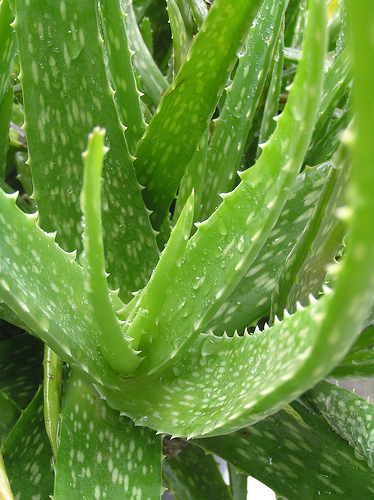|
|
|
 |
Nutrition |
| Aloe vera is an autotrophic organism; it can make its own food through photosynthesis. It uses CAM (a form a photosynthesis), which is an adaptation to the photosynthetic pathway in hot climates that involves the formation of malic acid. CAM involves the conversion of carbon dioxide to malic acid in darkness, and its release for use in photosynthesis in light. This process enables the plant to have its stomata open at night and closed in daytime. The stomata allow the plant to exchange gasses from within the plant to outside, but in the process water is let out. Especially in dry climates losing water is not an option for aloe vera. | |
| Aloe vera is a vasular plant. It has phloem and xylem cells that move the food out of the leaves to where ever it is needed and the water is pulled up by the leaves to the chloroplasts. Not only does the A. vera have phloem and xylem tissues but also has pericyclic tubules which store and transport the Aloe vera latex along the margin of the leaf. | |